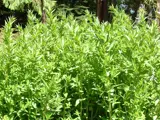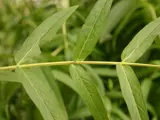 Purple loosestrife
Purple loosestrife
Common name: Purple loosestrife
Botanical name: Lythrum salicaria
Management category: Eradication
Native to Europe, Asia, North Africa and Australia it was first recorded in the wild in New Zealand in 1958.
Large infestations in North America are causing huge damage to wetlands, completely altering food chains, causing flooding and blockages by trapping sediments. Purple loosestrife has also started to encroach on drier sites such as pasture and cropping land.
Why is it a pest?
- Purple loosestrife is a highly aggressive invader of wetlands.
- Forms massive, tall, impenetrable stands, excluding all other species.
- It has the ability to dominate wetland and food sources for many fish and bird species.
- Prevents access for wetland birds and recreational users, and out-competes native vegetation, reducing biodiversity.
- A single mature plant can produce over two million seeds per year.
- Seeds are fertile in the soil for up to three years.
Where is it found?
- Currently one known site in the Bay of Plenty region: Pahoia, Tauranga.
- Purple loosestrife likes lake verges and wetland habitats.
- Its seed is spread by water movement and contaminated machinery, soil, livestock and hay. Plant fragments can also form new plants.
- It is also sometimes deliberately planted due to its attractive flowers.
What does it look like?
- Attractive, erect, perennial herb up to 1m tall (but can grow taller).
- Wooden square stems, smooth or hairy.
- Numerous magenta flower spikes seen December to February.
- Grows from extensive root system that is very dense and wooden.
- Seeds in autumn.
What are the rules?
Eradication
Purple loosestrife is an eradication pest. Eradication pests are present in the region but are limited in their size or extent of infestation. The eradication of these organisms is a feasible and cost-effective solution. The Bay of Plenty Regional Council is responsible for their control or eradication from the region. Action may be required from landowners or occupiers to support a control operation.
How do you get rid of it?
The Bay of Plenty Regional Council is responsible for the control of purple loosestrife. Please do not attempt to control it yourself. If you think you have found purple loosestrife please contact the Bay of Plenty Regional Council and we will control it for you.
Images






